Manitoba Insect & Disease Update
Issue 12: August 15, 2018
Summary
Diseases: Additional clubroot case reported in the RM of Lorne. Symptoms of aster yellows were observed in canola. White mould was observed in soybean as well as further cases of Phytophthora root rot.
Insects: Grasshopper populations continue to be monitored in susceptible crops in some areas. Bertha armyworm continue to be noticed in some canola fields, but mainly at sub-economic levels. Spider mites are becoming noticeable in some soybean fields, particularly around field edges.
Clubroot
An additional case of clubroot has been reported in the RM of Lorne. This is the second report of clubroot in this RM this year. Manitoba Agriculture continues to encourage growers to scout any areas in their canola fields where the crop in under-performing. Growers should contact their local Manitoba Agriculture office if clubroot is suspected. Field location remains confidential, but a government employee will need to confirm the case and can work with the producer on a management plan.
Aster Yellows
Symptoms of aster yellows in canola were observed in a field near Baldur during the canola disease survey. Less than 1% of plants in the field were infected. This disease shows up in Manitoba each year to varying degrees, but typically at low levels. High levels of this disease were last observed in 2012.
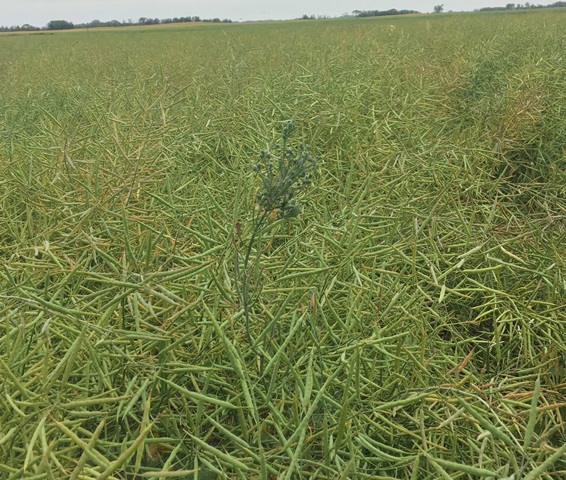
Figure 1. Aster yellows symptoms in canola
White Mould
White mould symptoms in soybean were observed in a field near Haywood. This disease is caused by Sclerotinia sclerotiorum. Environmental conditions were not conducive for infection by this pathogen in 2018 in most areas of the province. Low incidence was observed in this field, but infected plants were present scattered throughout the field.
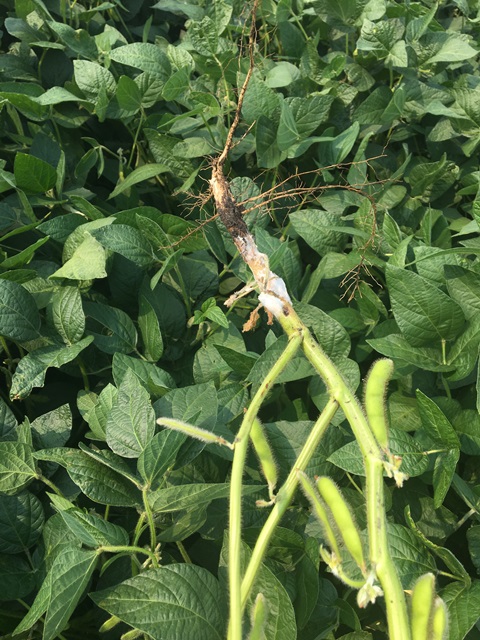
Figure 2. White mould symptoms in soybean.
Phytophthora Root Rot
Symptoms of Phytophthora root rot continue to be observed in soybean fields. At these later crop stages, often plants prematurely senesce and can be difficult to distinguish from natural senescence. If leaves remain attached on senesced plant it is likely that the senescence is due to Phytophthora root rot. Plants that are still green will show darkening of the lower stem as observed in the images below.
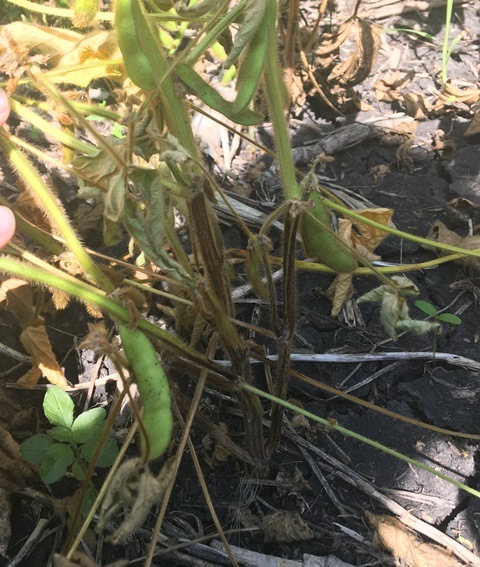
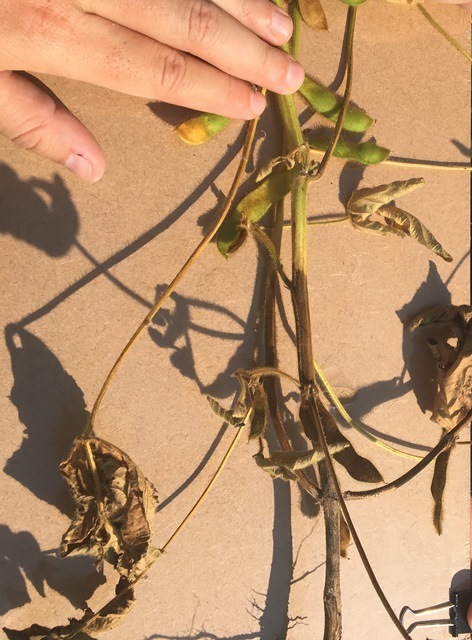
Figure 3. Phytophthora root rot symptoms in soybeans.
Spider mites in soybeans
Spider mite populations are often higher when conditions have been hot and dry for a sustained period of time, and populations can change substantially after heavy rains. So it is not surprising that some are showing up with this drier weather.
The species of spider mite found in soybeans is usually the twospotted spider mite (Tetranychus urticae). They are small (about 0.4 mm), so tapping the leaves over something that the mites can easily be seen on may help in determining their presence and levels. In addition to soybeans they may also be present in dry beans, corn, alfalfa, as well as some vegetables and ornamentals.
Spider mites can at times be highly concentrated around field edges. Levels along field edges may increase in soybeans when wheat is harvested or municipalities mow roadsides.
The stages of soybeans that are most susceptible to spider mites are the R4 (full pod) through R5 (beginning seed – when seeds are filling) stages. Once the soybeans reach R6 (full seed or green bean stage) the feeding from spider mites will have less impact on yield.
Regarding thresholds, there are several suggested thresholds out there, and all are nominal thresholds. The following is what was suggested for use in North Dakota, and is from a North Dakota Crop and Pest Reports (July 13, 2017):
Mite Threshold: Deciding whether to treat is difficult. Sample plants at least 100 feet into the field and walk in a “U” pattern sampling two plants per location at 20 different locations. A general action threshold is to treat when heavy stippling on lower leaves with some stippling progressing into middle canopy; mites present in middle canopy with scattered colonies in upper canopy; and lower leaf yellowing common. (Source: University of Minnesota, Ostlie & Potter).
Mite Threshold: Deciding whether to treat is difficult. Sample plants at least 100 feet into the field and walk in a “U” pattern sampling two plants per location at 20 different locations. A general action threshold is to treat when heavy stippling on lower leaves with some stippling progressing into middle canopy; mites present in middle canopy with scattered colonies in upper canopy; and lower leaf yellowing common. (Source: University of Minnesota, Ostlie & Potter).
Regarding insecticides, dimethoate (Cygon, Lagon) is the only insecticide registered for spider mites in soybeans. It has a 30 day preharvest interval. Some insecticides, such as pyrethroids, can increase populations of spider mites.
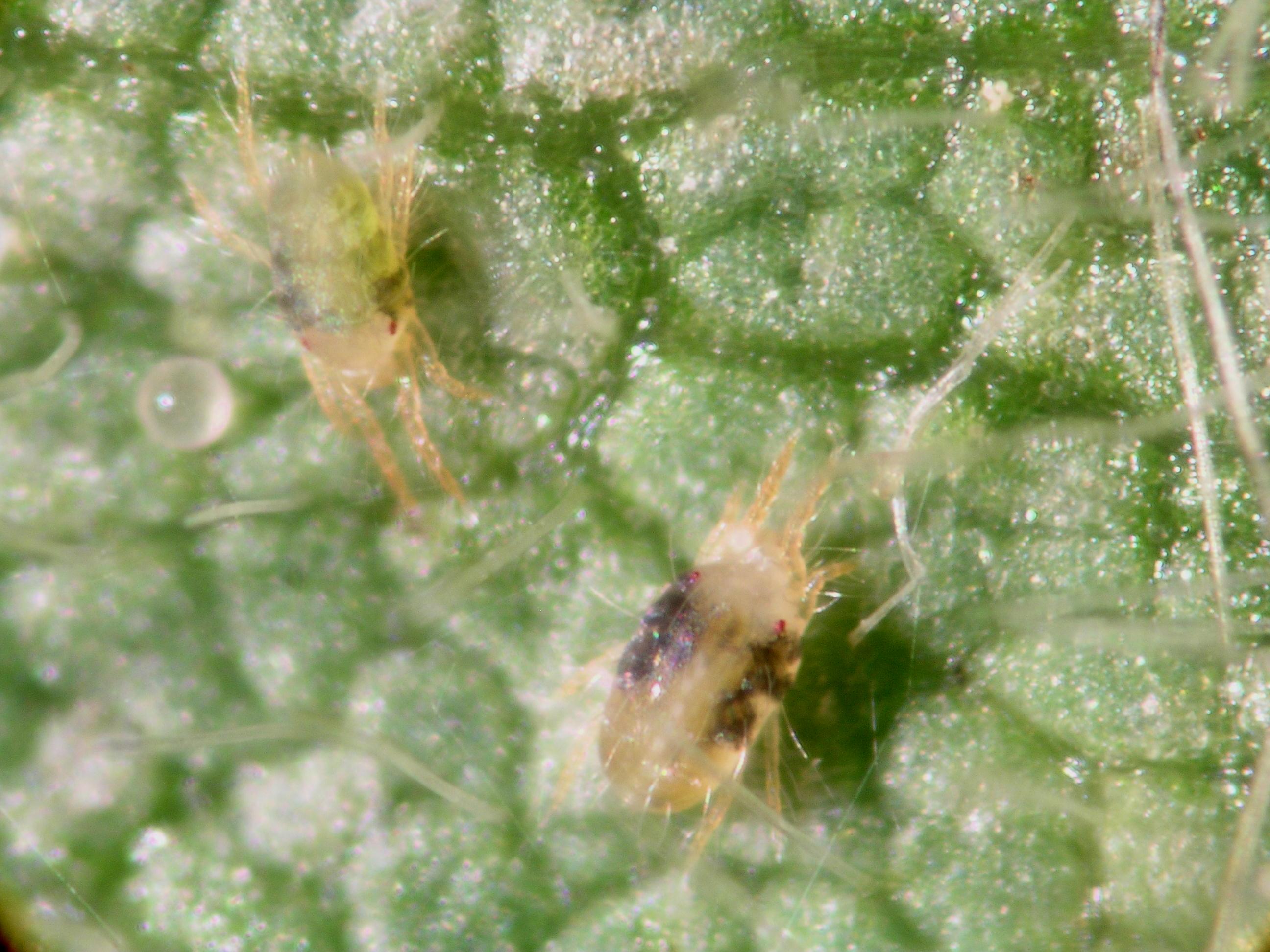
Figure 1. Twospotted spider mites.
Insect Monitoring Programs
Grasshopper Survey: A reminder for those participating in the grasshopper survey, that counts are done during August, when the majority of grasshoppers are in the adult stage.
Agronomists and farmers who would also be interested in estimating grasshopper numbers in or around the fields they are in and have this information included in the survey are encouraged to see the survey protocol for more details of the survey and where to send data. Estimates of grasshopper levels can be collected during regular farm visits. Data from the survey, along with weather data during the egg laying period of the grasshoppers, is used to produce a forecast for 2018.
The protocol and data sheet for the grasshopper survey is at: http://www.gov.mb.ca/agriculture/crops/insects/mb-grasshopper-survey.html
The protocol and data sheet for the grasshopper survey is at: http://www.gov.mb.ca/agriculture/crops/insects/mb-grasshopper-survey.html
Insect Identification Quiz
This insect was found burrowed into a navy bean pod, feeding on a seed. What is it?
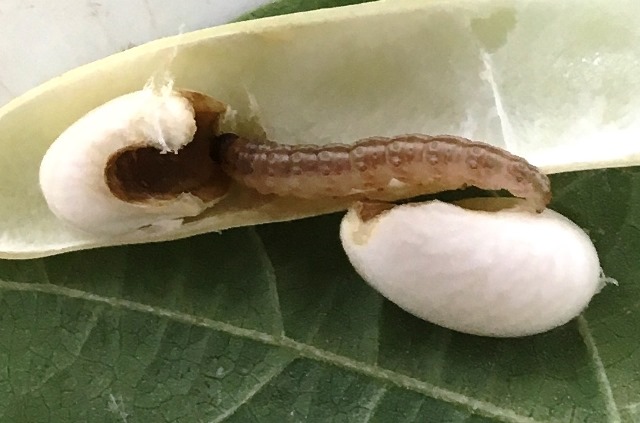
Answer: This is a European corn borer.
They have a very broad host range, feeding on more than 200 species of plants. So the name corn borer may be a bit misleading. Other host plants include potatoes, small grains, beans, peppers, apples, and many common weeds.
Although it can be a major pest of corn, it is not considered a major pest of dry beans.
----------------------------------------------------------------------------------------------------------------------
Compiled by:
John Gavloski, Entomologist Holly Derksen, Field Crop Pathologist
Manitoba Agriculture Manitoba Agriculture
Phone: (204) 750-0594 Phone: (204) 750-4248
To report observations on insects or plant pathogens that may be of interest or importance to farmers and agronomists in Manitoba, please send messages to the above contacts.
To be placed on an E-mail list so you will be notified immediately when new Manitoba Insect and Disease Updates are posted, please contact John Gavloski at the address or numbers listed above.

